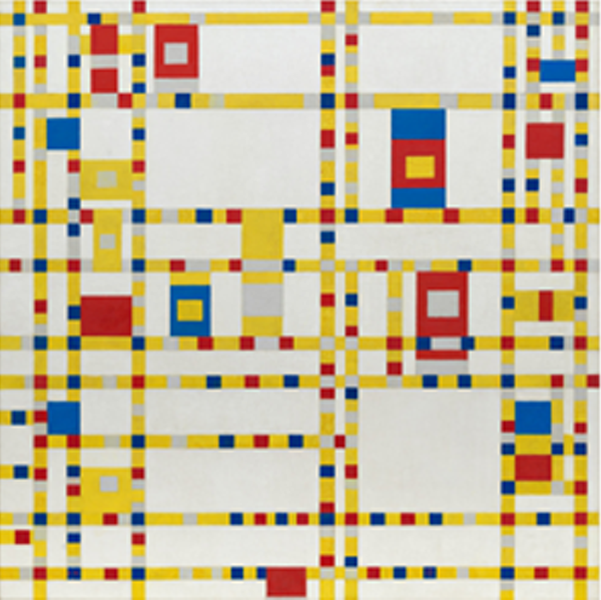Mondrian’s aesthetic doctrine of Neo-Plasticism restricted the painter to the most basic kinds of line—that is, to straight horizontals and verticals—and to a similarly limited color range, the primary triad of red, yellow, and blue plus white, black, and the grays in between. But Broadway Boogie Woogie omits black and breaks Mondrian’s once uniform bars of color into multicolored segments. Bouncing against each other, these tiny, blinking blocks of color create a vital and pulsing rhythm, an optical vibration that jumps from intersection to intersection like traffic on the streets of New York. At the same time, the picture is carefully calibrated, its colors interspersed with gray and white blocks.
Mondrian’s appreciation of boogie-woogie may have sprung partly from the fact that he saw its goals as analogous to his own: “destruction of melody which is the destruction of natural appearance; and construction through the continuous opposition of pure means— dynamic rhythm.”
Publication excerpt from MoMA Highlights: 375 Works from The Museum
of Modern Art, New York (New York: The Museum of Modern Art, 2019)

Leave a Reply